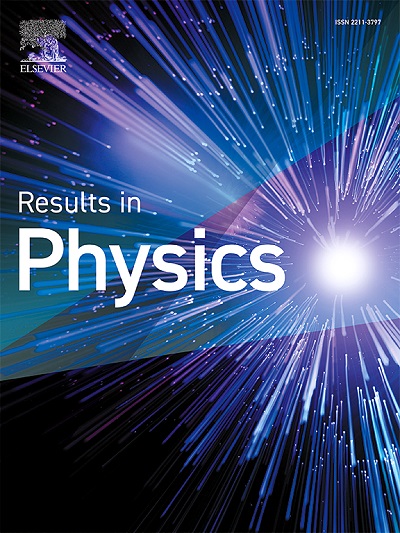Emission-angle-dependent colour properties of full-colour quantum-dot light-emitting diode displays
IF 4.4
2区 物理与天体物理
Q2 MATERIALS SCIENCE, MULTIDISCIPLINARY
引用次数: 0
Abstract
Electroluminescence quantum dot light-emitting diodes (QD-LEDs) have attracted significant attention as self-emissive pixel devices for next-generation displays, owing to their wide colour selectivity and high colour purity. In this study, we developed a computational framework to analyse the optical characteristics of the QD-LEDs using an optical transfer matrix method, which describes light propagation across the multiple optical layers of the devices. We investigated the optical properties of a typical bottom-emission QD-LED device architecture. The angular radiances for red, green, and blue emission of QD-LED devices were fully calculated by a grid search method for hundreds of thickness combinations of transport layers and an anode electrode, to maximise the brightness in the normal direction while minimising angular colour shift. The brightness and the angular colour properties of the display pixel, where red, green, and blue QD-LED devices are integrated under the same thickness configuration, are highly sensitive to the layer thickness combination. Through the computational framework, we achieved a hypothetical full-colour QD-LED display pixel having a colour shift of less than 0.025 and stable correlated colour temperature between 5,600 K and 7,000 K as the outcoupling angle increased from 0° to 80°. We believe that the computational framework designed in this study is useful for designing and optimising the optical configuration of the QD-LED device architecture for the next-generation high-image-quality full-colour AM displays based on QD-LED technology.
求助全文
约1分钟内获得全文
求助全文
来源期刊

Results in Physics
MATERIALS SCIENCE, MULTIDISCIPLINARYPHYSIC-PHYSICS, MULTIDISCIPLINARY
CiteScore
8.70
自引率
9.40%
发文量
754
审稿时长
50 days
期刊介绍:
Results in Physics is an open access journal offering authors the opportunity to publish in all fundamental and interdisciplinary areas of physics, materials science, and applied physics. Papers of a theoretical, computational, and experimental nature are all welcome. Results in Physics accepts papers that are scientifically sound, technically correct and provide valuable new knowledge to the physics community. Topics such as three-dimensional flow and magnetohydrodynamics are not within the scope of Results in Physics.
Results in Physics welcomes three types of papers:
1. Full research papers
2. Microarticles: very short papers, no longer than two pages. They may consist of a single, but well-described piece of information, such as:
- Data and/or a plot plus a description
- Description of a new method or instrumentation
- Negative results
- Concept or design study
3. Letters to the Editor: Letters discussing a recent article published in Results in Physics are welcome. These are objective, constructive, or educational critiques of papers published in Results in Physics. Accepted letters will be sent to the author of the original paper for a response. Each letter and response is published together. Letters should be received within 8 weeks of the article''s publication. They should not exceed 750 words of text and 10 references.
 求助内容:
求助内容: 应助结果提醒方式:
应助结果提醒方式:


